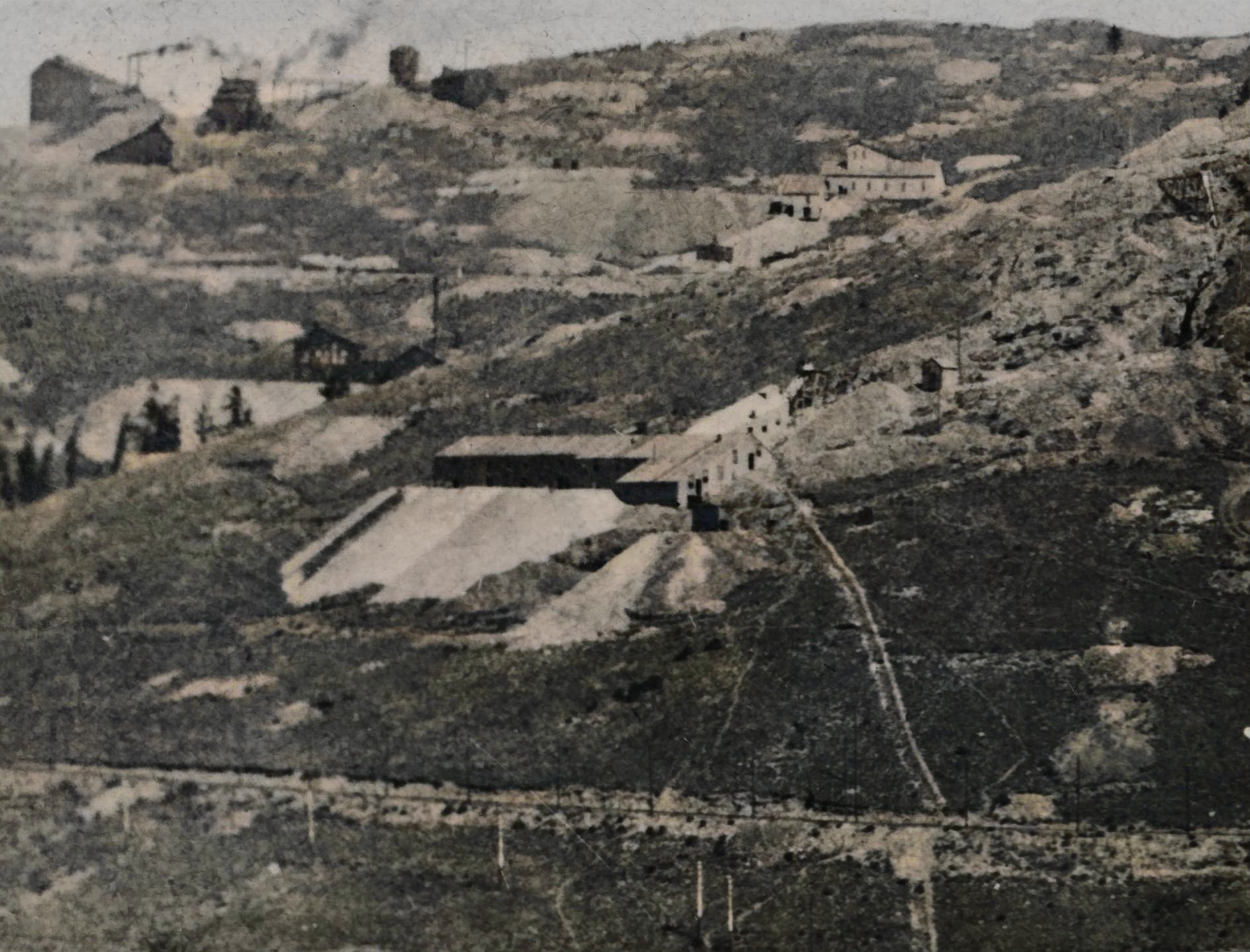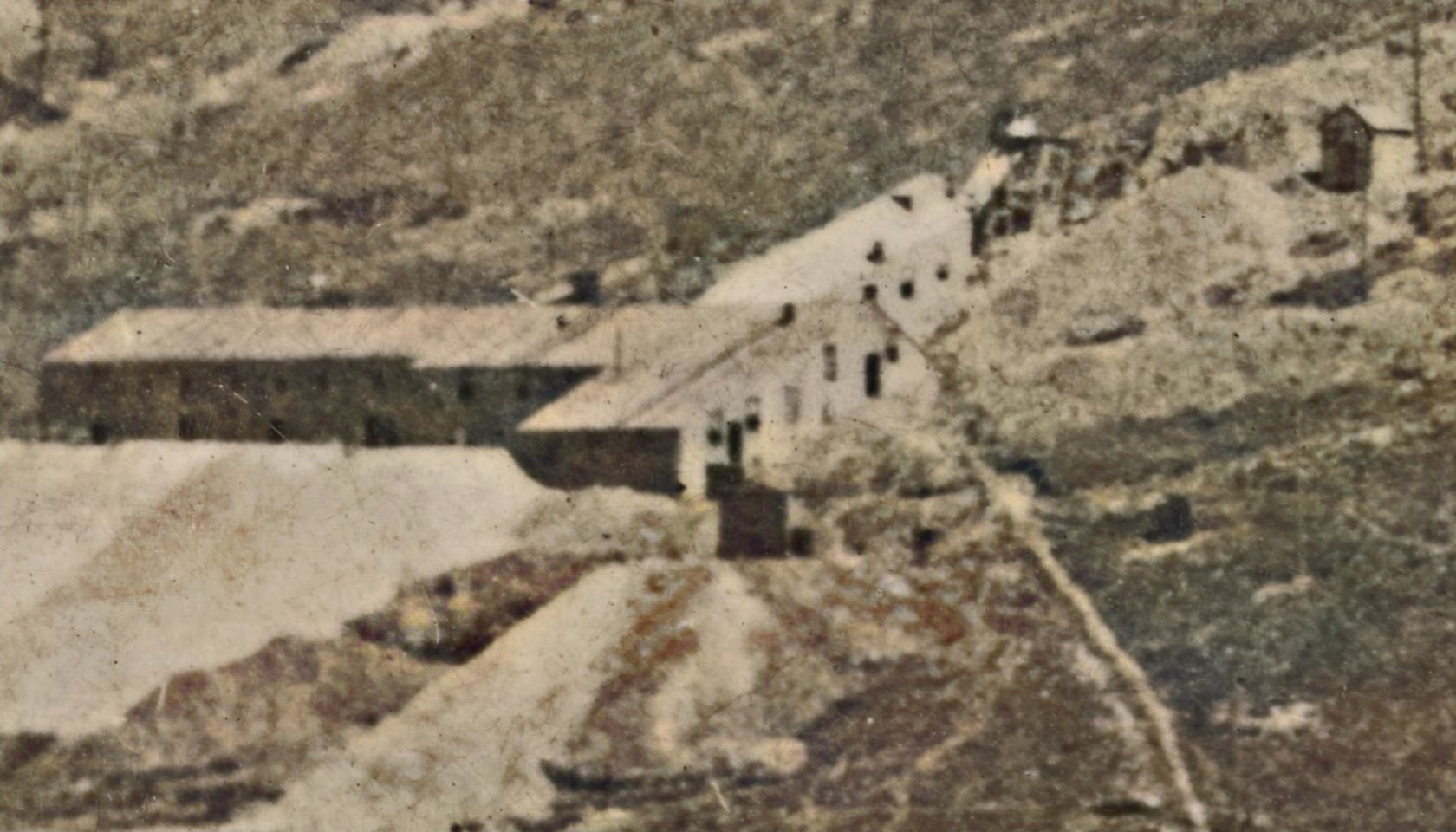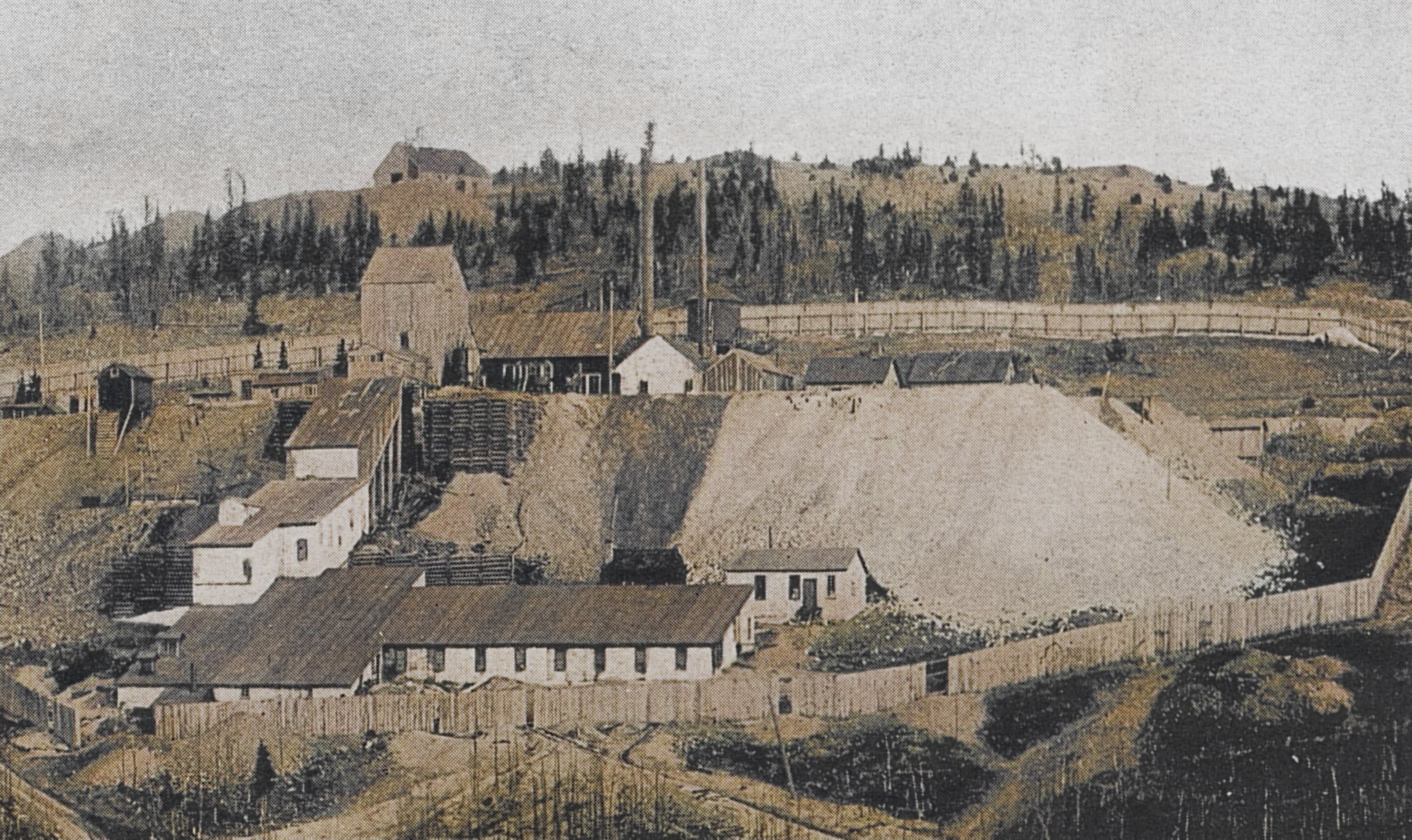-> HathiTrust Digital Library Site; Link to Page.
Slightly changed text a tiny bit. Source had no pics, so I reused pics from my collection
The progress in the local treatment of low grade ores in the Cripple Creek district during the past year by means of cyanidation without roasting has not been in the main very encouraging.
In September, 1905, four mills were actively engaged in the treatment of low grade ores by the cyanide process. None of these are now running.
→ The King & Craig or Anaconda mill, of 150 tons capacity, ceased operations after cleaning up the surface material available. It is now proposed to resume work upon custom ore, but a steady supply of oxidized ore in large quantities seems doubtful.
→ The Los Angeles mill of the Exposition Mining and Leasing Company was destroyed by fire shortly after completion and has not been rebuilt.
→ The Wild Horse mill completed the treatment of the dumps from the Wild Horse shaft and has since been idle.
→ Also the Lois mill at Copper mountain, which operated for some time with apparent success, is now idle.
At present only three mills are operating with an aggregate tonnage of only about 150 tons per day.
→ The Old Homestake plant has been refitted by a Sioux City company and has been treating about 100 tons per day. Part of this has been custom ore treated on charges ranging from $2.50 up, according to grade of ore.
→ Messrs. Hamilton & Mayfield treated some custom ore during the year in a small plant at Goldfield but have apparently met with little success, as the plant is now idle.
→ Two small plants near Victor, the Home Run and Santa Rita mills, are now treating about twenty tons each per day of a fairly good grade of ore.
Altogether there are at present in the Cripple Creek district ten complete plants for the treatment of oxidized ores with a total capacity of about 1,600 tons per day. Compare this with the amount of ore actually being treated and it is obvious to the most casual observer that there must be something wrong somewhere.
Without attempting to go into detail of the different mills we believe we are safe in saying that the majority of failures may be classified as due to two main causes, or perhaps better as due to two different classes of people. First the unscrupulous promoter, and second the misinformed and unqualified enthusiast.
The first seeks the investment of capital for his own personal gain with little regard for the results upon the mining and milling industries.
The second, while honest in motive, does not appreciate, the nature of the difficulties to be encountered. Wherever the mining industry is represented we find landmarks in the shape of abandoned mills pointing out the folly of trying to treat ore without first ascertaining the quantity and quality of the ore, to be treated. Yet the mistake still continues and doubtless will continue as long as mines and mills exist.
The treatment of low grade Cripple Creek ores on a large scale we feel safe in saying will never be satisfactorily accomplished by simple cyanidation without roasting or for that matter even by the aid of roasting. The Wishbone Company are seeking a solution of the problem by following the Black Hills practice of amalgamation followed by cyanidation of the tailings.
While this may give better extraction by the saving of coarse gold it is doubtful if the process will find any application to tellurides. Roasting, while converting the tellurides into free gold, partially amenable to cyanide treatment, will unavoidably, in the case of Cripple Creek ores, produce more or less coarse gold practically impossible to save by the process.
It would seem to follow, then, that the only method of cyanidation applicable to all classes of Cripple Creek ores must be one which includes in the process both roasting and amalgamation. This necessarily precludes the possibility of the general treatment of low grade ores.
Recent events bearing upon the handling of Cripple Creek Ores seem destined to bring about radical changes in milling conditions and it is a matter of surprise that no concerted action has been previously taken by Cripple Creek operators looking to the treatment of their own ores.
Complaints are heard on every hand of exorbitant treatment, sampling and ore-hauling charges, together with charges of fraudulent sampling, etc., until it seems strange that the mining companies with large bodies of ore reserves have not made some arrangements to eliminate these drawbacks.
Recent pooling of railroad, sampling and milling interests have aggravated the trouble.
Some of the mines have already broken away from the milling trust and from current reports others are making preparations to do so. The Golden Cycle has its own mill nearly completed. The Isabella has one under construction. The Vindicator and Jo Dandy mines are reported as making arrangements to erect their own milling plants.
These facts, while lending encouragement, on the whole do not to any great extent affect the prospects of the smaller producers who are unable of themselves to erect their own treatment plants. Concerted action in this regard is necessary if any great benefit is to be derived.
The saving in sampling charges, alone would amount to several thousand dollars monthly not to speak of the elimination of factors tending to produce suspicion if nothing more, in the minds of the shippers as to the reliability of their sampling returns.
If the milling and sampling interests have been able to make millions of dollars from the Cripple Creek producers there seems no reason why they should not be able to do as well for themselves, provided concerted action can be obtained.

Cropped Gold Hill View with Anaconda Mill; Rittenhouse; E. Porter Gold King; Lexington; Anchoria-Leland Mines
Photo by: Unknown


